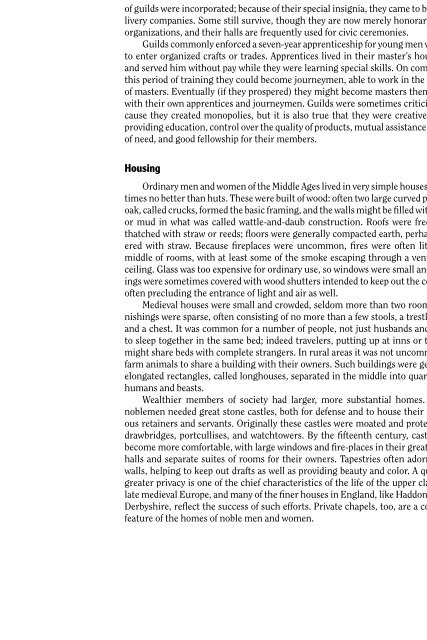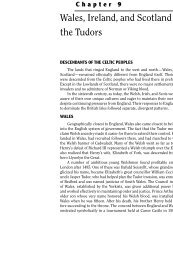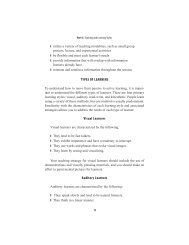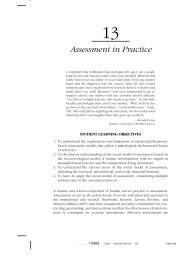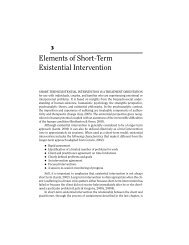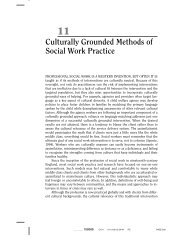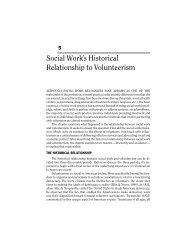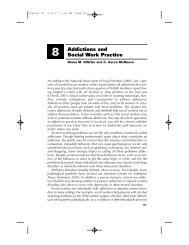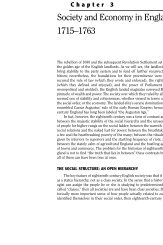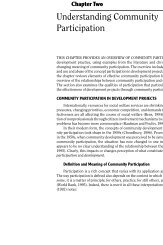Chapter 6 Medieval British Society, 1066–1485 - Lyceum Books
Chapter 6 Medieval British Society, 1066–1485 - Lyceum Books
Chapter 6 Medieval British Society, 1066–1485 - Lyceum Books
Create successful ePaper yourself
Turn your PDF publications into a flip-book with our unique Google optimized e-Paper software.
126 Part II Norman Britain<br />
of guilds were incorporated; because of their special insignia, they came to be called<br />
livery companies. Some still survive, though they are now merely honorary social<br />
organizations, and their halls are frequently used for civic ceremonies.<br />
Guilds commonly enforced a seven- year apprenticeship for young men wishing<br />
to enter organized crafts or trades. Apprentices lived in their master’s household<br />
and served him without pay while they were learning special skills. On completing<br />
this period of training they could become journeymen, able to work in the employ<br />
of masters. Eventually (if they prospered) they might become masters themselves,<br />
with their own apprentices and journeymen. Guilds were sometimes criticized because<br />
they created monopolies, but it is also true that they were creative forces,<br />
providing education, control over the quality of products, mutual assistance in time<br />
of need, and good fellowship for their members.<br />
Housing<br />
Ordinary men and women of the Middle Ages lived in very simple houses, sometimes<br />
no better than huts. These were built of wood: often two large curved pieces of<br />
oak, called crucks, formed the basic framing, and the walls might be fi lled with earth<br />
or mud in what was called wattle-and-daub construction. Roofs were frequently<br />
thatched with straw or reeds; fl oors were generally compacted earth, perhaps covered<br />
with straw. Because fi replaces were uncommon, fi res were often lit in the<br />
middle of rooms, with at least some of the smoke escaping through a vent in the<br />
ceiling. Glass was too expensive for ordinary use, so windows were small and openings<br />
were sometimes covered with wood shutters intended to keep out the cold, but<br />
often precluding the entrance of light and air as well.<br />
<strong>Medieval</strong> houses were small and crowded, seldom more than two rooms. Furnishings<br />
were sparse, often consisting of no more than a few stools, a trestle table,<br />
and a chest. It was common for a number of people, not just husbands and wives,<br />
to sleep together in the same bed; indeed travelers, putting up at inns or taverns,<br />
might share beds with complete strangers. In rural areas it was not uncommon for<br />
farm animals to share a building with their owners. Such buildings were generally<br />
elongated rectangles, called longhouses, separated in the middle into quarters for<br />
humans and beasts.<br />
Wealthier members of society had larger, more substantial homes. Feudal<br />
noblemen needed great stone castles, both for defense and to house their numerous<br />
retainers and servants. Originally these castles were moated and protected by<br />
drawbridges, portcullises, and watchtowers. By the fi fteenth century, castles had<br />
become more comfortable, with large windows and fi re- places in their great dining<br />
halls and separate suites of rooms for their owners. Tapestries often adorned the<br />
walls, helping to keep out drafts as well as providing beauty and color. A quest for<br />
greater privacy is one of the chief characteristics of the life of the upper classes in<br />
late medieval Europe, and many of the fi ner houses in England, like Haddon Hall in<br />
Derbyshire, refl ect the success of such efforts. Private chapels, too, are a common<br />
feature of the homes of noble men and women.


